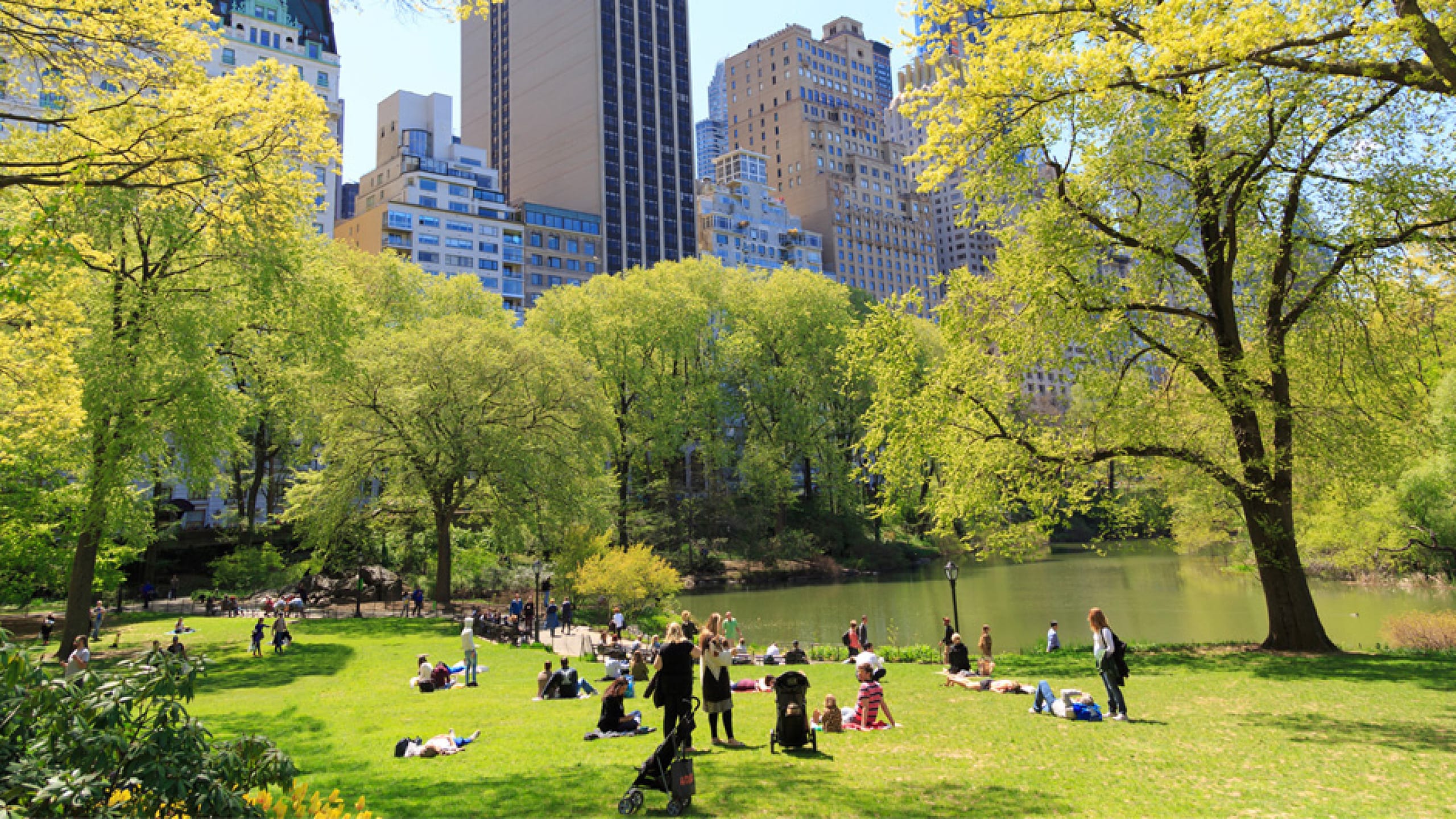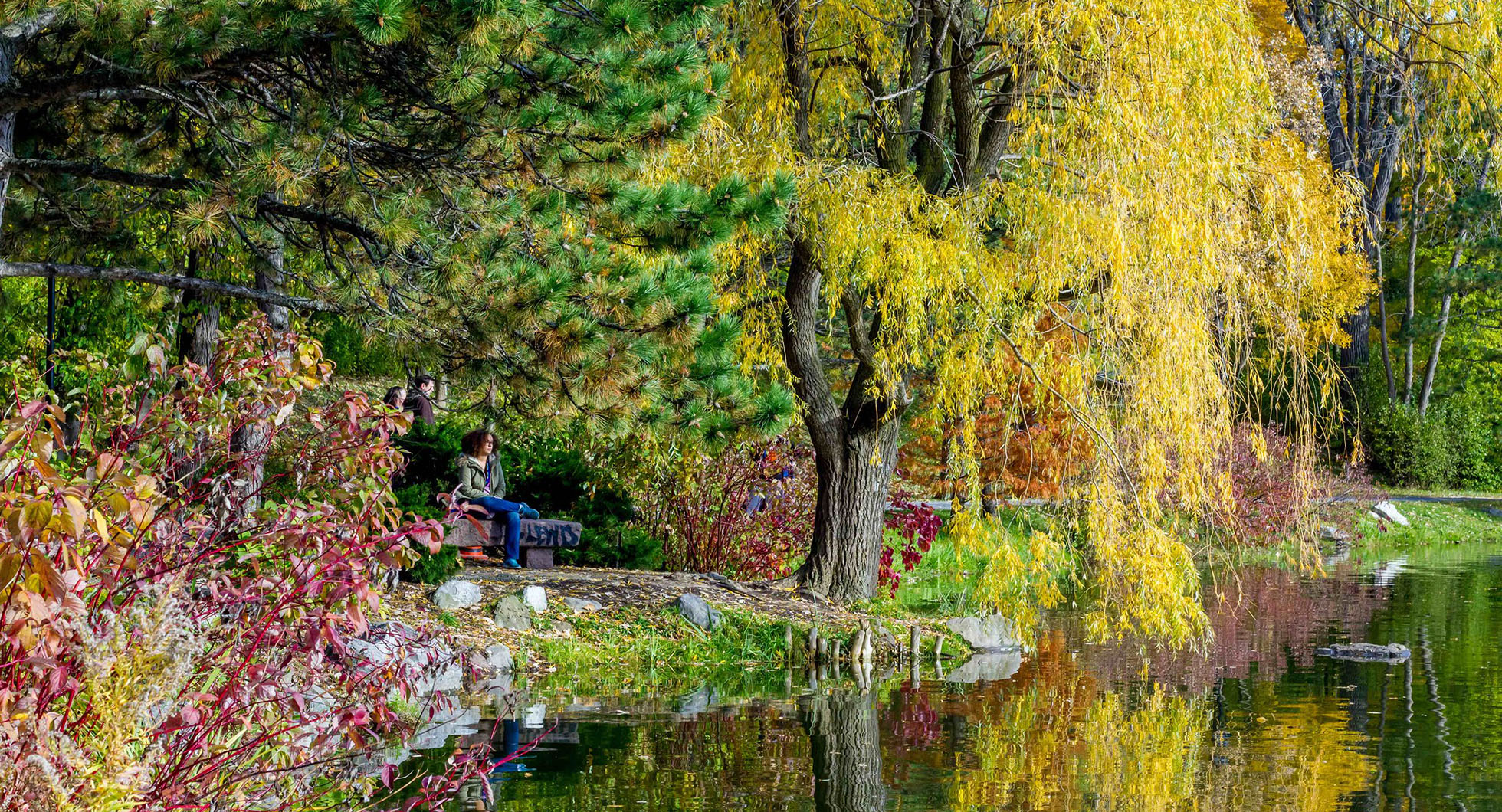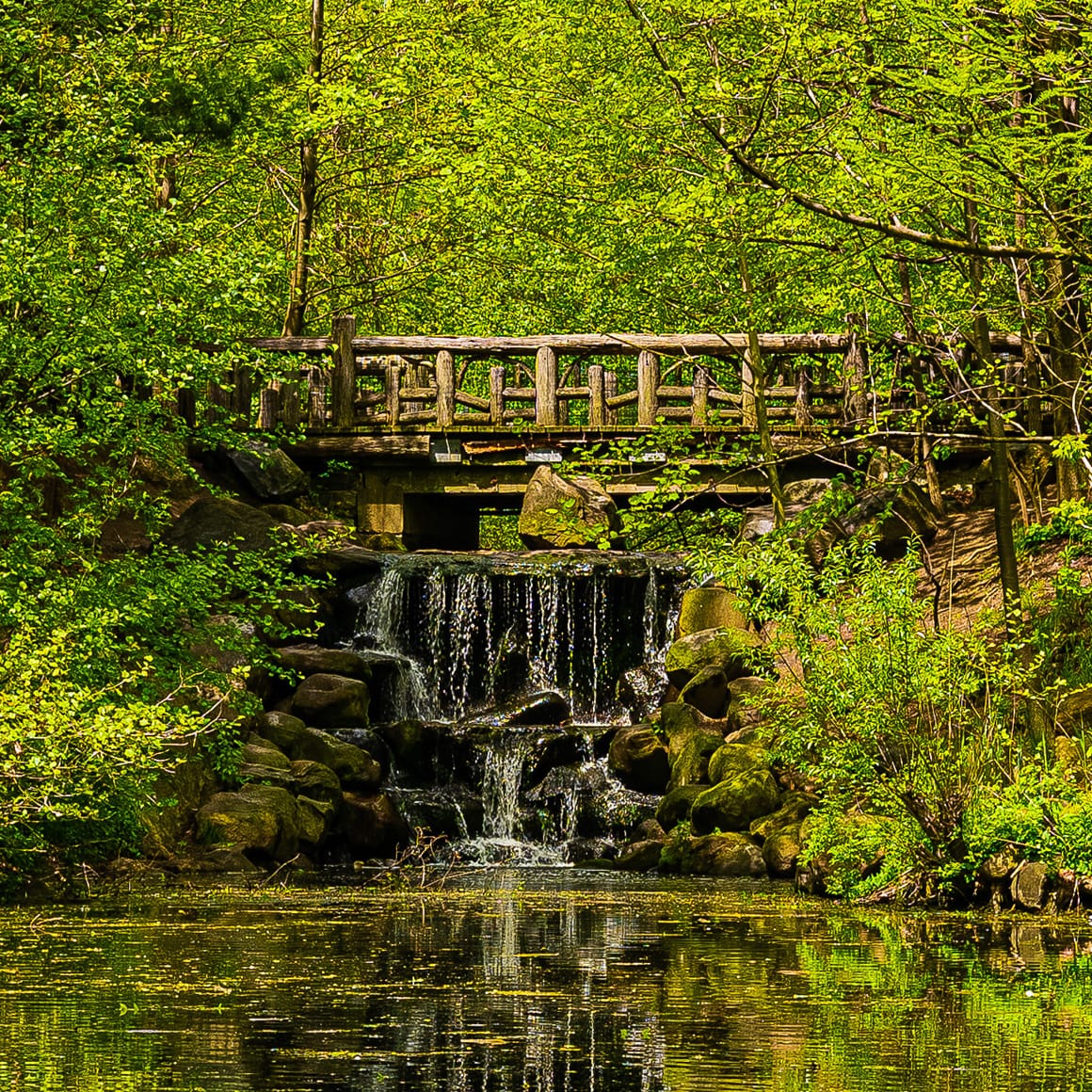
Frederick Law Olmsted created hundreds of works of landscape architecture. While they were all different, they embodied a set of design principles that Olmsted developed in his writing and “on the ground.” What were Olmsted’s design concerns? And what should one look for when walking through an Olmsted design?
Key principles shaped Olmsted’s designs and serve as a blueprint for Olmsted’s enduring works — and for contemporary design.
1. Scenery
From the earliest days, traveling with his father, Olmsted developed a love for scenery. In his design work, he sought to create scenery — an enhanced sense of space, indefinite boundaries and constant opening of new views. He avoided formalized planting and decorative structures that would distract from the overall design. And he sought to take a comprehensive approach, looking beyond the nearest borders. When possible, he connected public grounds by greenways and boulevards so that they extended and maximized park spaces.
2. Suitability
Olmsted’s landscapes are never about Olmsted, they are all about the land. His projects show a profound respect for natural scenery and topography, often called the “genius of the place.” Abiding by the “genius of the place” meant creating a design that took advantage of unique characteristics of the site, even its disadvantages. And it meant factoring in long-term maintenance and sustainable design. Plant materials should thrive, be non-invasive and require little maintenance. In this way, the design should conserve natural features and promote the natural ecology of the site.

3. Style
Olmsted’s projects employ specific styles to create a particular effect. The “pastoral” style provides open greenspace, small bodies of water and scattered trees to soothe the eye and restore the spirit. The “picturesque” style involves profuse planting, especially with shrubs, creepers and ground cover, on steep and broken terrain. The picturesque style conveys the richness of nature, effects of light and shade, and a sense of mystery.
4. Subordination
Much as a painter, Olmsted viewed landscape designs as unified compositions. He eschewed decorative treatment of plantings and structures that would distract from the overarching design. Elements, features and objects should be subordinate to — and contribute to — an overall effect. According to Olmsted, this was “Art to conceal Art.”
5. Separation
In the late 19th century, city life was crowded, stressful and dangerous. Olmsted was intent on subtly directing movement through the landscape to improve the user’s experience. One of Olmsted’s guiding principles was the separation of space for different purposes to ensure safety and reduce distractions. By separating paths for efficiency and ease, Olmsted sought to orchestrate movement to avoid collision and to make the experience restorative and restful. By identifying specific precincts for specific purposes, he sought to orchestrate use, preventing competition amongst uses.
6. Sanitation
From his earliest days on the Staten Island farm, Olmsted focused on the important role landscape design could play in the provision of sanitation and health. His landscapes are more than beautiful surface displays. They regularly provide drainage and address engineering considerations. designed to promote the user’s physical and mental health.
7. Service
Olmsted employed landscape design to address fundamental social and psychological needs. He believed that connection to nature in urban areas was restorative and conducive to mental and physical well-being. He saw the power of parks to bring people — of every background — together. “So long as considerations of utility are neglected or overridden by considerations of ornament, there will be no true Art,” he wrote.
Learn more about Seven S’s of Olmsted Design and the landscape architect’s essential theory >
Dr. Beveridge is the Series Editor of The Frederick Law Olmsted Papers whose scholarship informs the Olmsted 200 celebration website. Olmsted 200 expresses our sincere thanks.











